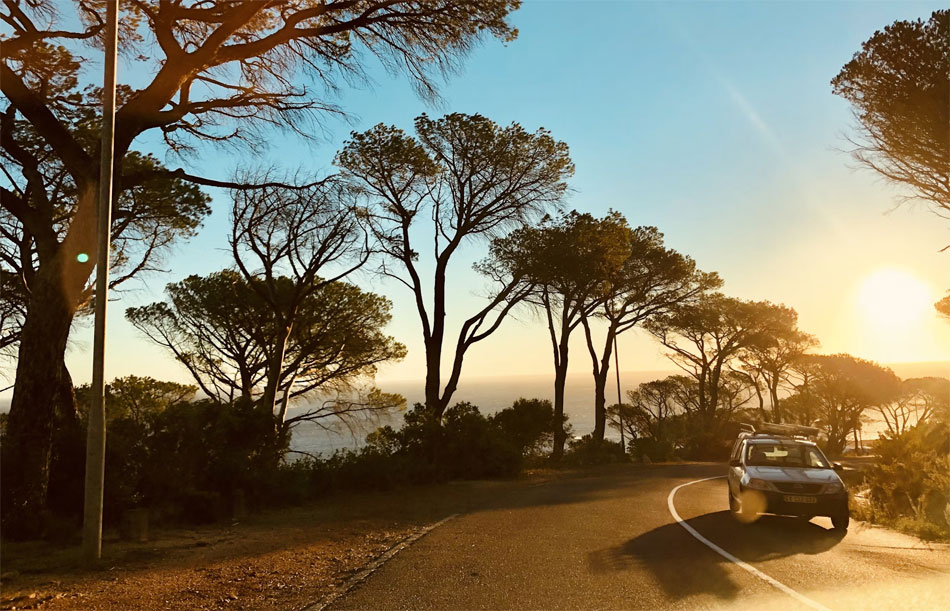Featuring a road network of over 750,000 kilometers, South Africa’s roadway is the tenth-longest in the world. Officially managed by the South African National Roads Agency (SANRAL) in conjunction with the local municipal governments, most of the highways and roads in major cities are well-maintained. However, there are still some regions that experience poor road conditions, leading to traffic congestion, such as in Cape Town, Durban, and Johannesburg. Multiple factors such as increasing car ownership and rapid urbanization have led to such a problem.
Another result of increasing car ownership has been the gain in the number of driving licenses issued by the Driving Licence Testing Centre (DLTC). DLTCs are government-run facilities where applicants can not only apply for new driving licenses but also renew their existing ones. To make the user experience more seamless, the South African government has established more than 200 DLTC centers across the country. With that being said, if you are looking to renew your driving license, then our all-inclusive guide can be a worthwhile companion.
Steps to Follow For Renewal

According to the Government of South Africa, users must renew their driving licenses four weeks before their expiration date. If the renewal is carried out after the expiration date, then a temporary driving license will be issued, and an additional charge must be paid to obtain the full-fledged driving license.
It should be known that applicants are not required to take a driving test when renewing their driving licenses. However, tests such as fingerprint scans and eye testing will be carried out. Applicants also have the option to get their eyes tested specifically by an independent optometrist and submit the report at the DLTC. If the eye tests show that your eyesight has worsened, then new conditions will be attached to your driving license.
With the rules and regulations out of the way, let us focus on the steps you need to follow to get your driving license renewed.
- The primary step involves heading over to your nearest DLTC facility. To find one near you, visit here.
- On your journey, take your identity document (original) as well as a photocopy, along with your old driver’s license card or your valid South African passport. Additionally, you also need to take four black-and-white ID photographs and your proof of residence (such as your utility bill).
- At the DLTC facility present the above-mentioned documents and apply for a renewal. You will need to fill out the ‘DL1’ form, which is for ‘Application For Renewal Of Driving License Card’.
- If you have to change your residential address, then you need to complete the NCP (Notification Of Change Of Address Or Particulars Of Person Or Organisation) form. Also, do not forget to attach your eye test report (either carried out at the DLTC center or by an optometrist of your choice).
- Once done, proceed to pay the requisite renewal fee. After that, your renewed driving license card will be delivered to your residential address by post.
Keep in mind that if the utility bill is not in your name, then the owner of the bill should make an affidavit declaring that you currently reside at the given address. Also, the utility bill must be attached to the affidavit.
Alternatively, if you reside in an informal settlement, then you need to provide an official stamped letter from your ward councilor confirming your current residential address.
Lastly, keep in mind that your new driving license will take around four to six weeks to arrive at your address via postal mail.
Everything You Need To Know
In South Africa, the driver’s license serves as the official document that helps authorize the holder to drive a motor vehicle. The minimum age to hold a driving license in the country is 18 years, except for ‘Code A1’ vehicles, where the minimum age is 16 years. It should be known that driving licenses are issued based on the type of vehicle that the holder will drive, and a detailed guide for the same has been provided below.
For motorcycles, there are two driving license codes, namely ‘A1’ and ‘A’. The former type includes motorcycles that have an engine capacity of 125 cc (cubic centimeters) or less. The latter type deals with motorcycles that have an engine capacity that is greater than 125 cc.
Then comes light motor vehicles, where there are two codes as well. Code ‘B’ deals with vehicles such as minibuses, goods vehicles, etc. that have a GVM (Gross Vehicle Mass) of 3,500 KG or less. On the other hand, the ‘EB’ code deals with vehicles having a GVM of more than 3,500 KG.
Finally, there are driving license codes for heavy motor vehicles. Code ‘C1’ deals with vehicles that are used for transporting passengers and includes Code ‘B’ and ‘EB’ vehicles as well. Code ‘C’ deals with vehicles that have a GVM of more than 16,000 KG. In addition to that, code ‘EC1’ deals with vehicles that have a GVM between 3,500 KG and 16,000 KG. And code ‘EC’ includes vehicles that have a GVM of more than 18,000 KG.
Keeping the aforementioned requirements in mind, the South African government offers three kinds of learner’s driving licenses: Code 1 (motorcycles), Code 2 (vehicles having a GVM less than 3,500 KG), and Code 3 (all vehicles barring motorcycles). Once a learner’s license is obtained, users can take the driving test to obtain a full-fledged driving license, for which a temporary one will be first issued (valid for six months), after which the permanent driving license can be obtained within the next 4-6 weeks from the collection center.
For any additional assistance, contact the relevant local municipality at your place of residence.

